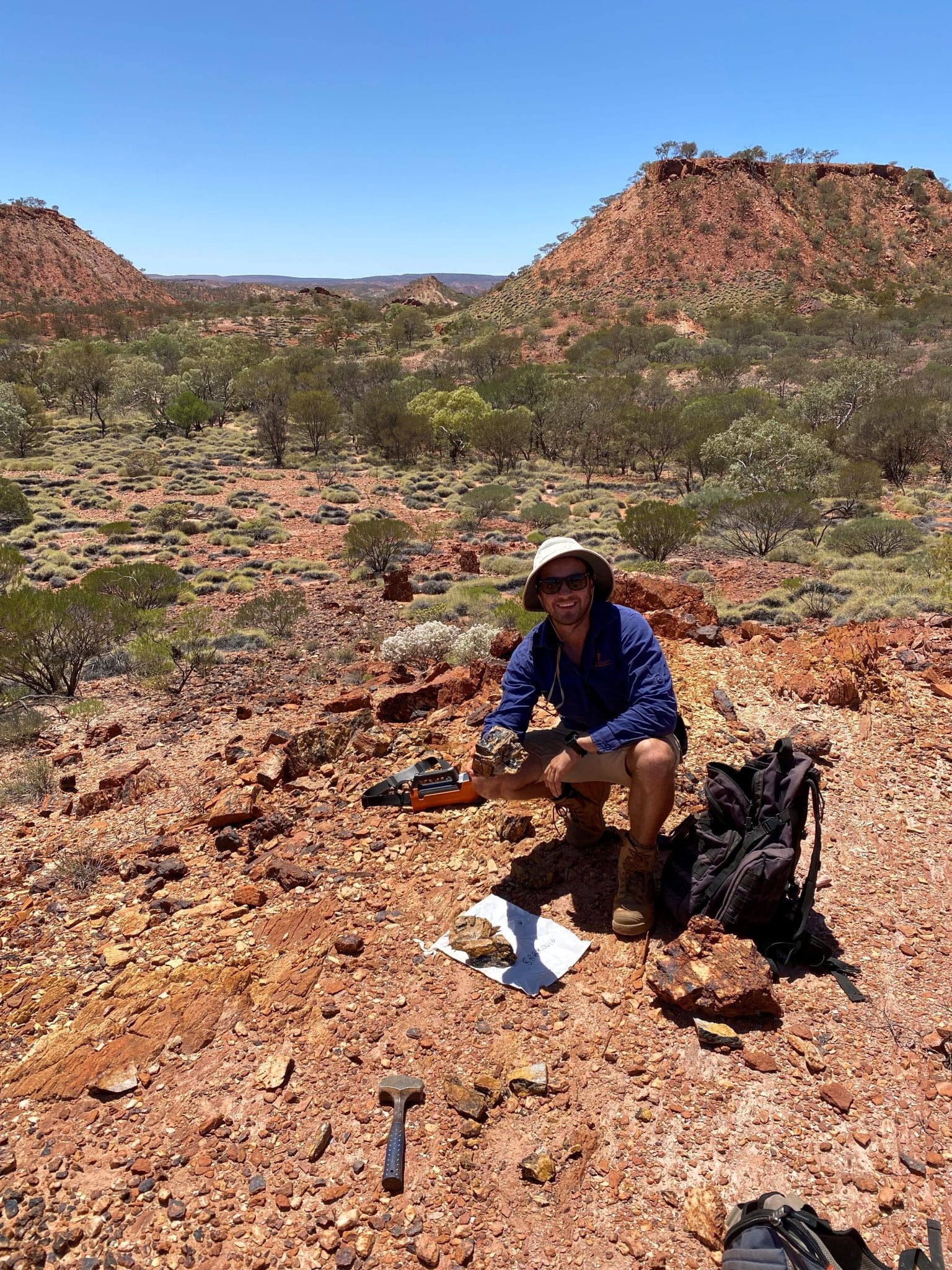Bresnahan HREE, Au-Ag-Sb & Uranium Project (100%)
Bresnahan is located ~125km southwest of Newman in the Ashburton Basin. The project comprises ~3,700km2 covering over 200kms strike along the Bresnahan Basin / Wyloo Group unconformity.
Bresnahan is prospective for unconformity related heavy rare earth (“HREE”) deposits similar to Browns Range HREE deposits and mesothermal lode gold similar to Paulsen’s Au-Ag-Sb deposits along strike.
Prior to consolidation by Dreadnought, the Bresnahan Basin had only been explored for unconformity uranium with limited exploration for mesothermal gold.
Bresnahan is a first mover opportunity to explore for unconformity HREE.


Large Scale Project, Next Door to Pilbara Infrastructure – World’s Top Investment Jurisdiction
- ~4,700 kms2 of tenure, 100% owned, located in the underexplored Ashburton Region of Western Australia on the doorstep of Pilbara iron ore infrastructure.
- Critical minerals, in the world’s top investment jurisdiction, Western Australia, based on the Investment Attractiveness Index published in the Fraser Institute’s Annual Survey of Mining Companies.
- Limited and fragmented historical exploration. Dreadnought is the first explorer to consolidate the region and to undertake detailed geophysical and cutting edge modern geochemical techniques for the exploration and discovery of multiple commodities.
New Search Space for HREE – Major Discovery Potential
- The Bresnahan Basin is a conceptual unconformity heavy rare earth province with a similar geological setting to the Athabasca Basin in Canada and Browns Range in Western Australia. These settings are home to the few known hard rock HREE (including high value dysprosium and terbium “Dy-Tb”) deposits.
- HREE mineralisation was first identified in the region in 2008. However, the significance of the mineralisation was not recognised until the publication of the unconformity HREE model by Northern Minerals Ltd (ASX:NTU) and The Australian National University.
- HREE mineralisation, alteration and pathfinder geochemistry, similar to Browns Range, has been confirmed at Bresnahan with significant results including BBRK0046: 1.33% TREO (25% HREE:TREO) and BBRK0050: 1.21% TREO (19% HREE:TREO)
- The opening of new search spaces is one of the greatest lead indicators of major discoveries.
High-Grade Au-Ag-Sb
- Similar lithostructural setting to the Paulsens and Mt Olympus gold deposits.
- Rock chips from the Monster Au-Ag-Sb prospect include BBRK0012: 11.8 g/t Au, 650 g/t Ag, 2.9% Sb and BBRK0013: 11.9 g/t Au, 710 g/t Ag, 0.5% Sb
Proven Uranium Province with Untested Targets Defined by Major Companies
- Historical exploration by major uranium miners including CRA, Pancontinental and Uranerz started in the 1970s through early 1990s and resulted in the discovery of outcropping mineralisation at the Bresnahan unconformity including the Angelo River deposit.
- Second wave of uranium exploration led by Cameco, Vale and U3O8 deployed airborne EM for the first time to identify targets under the shallow dipping Bresnahan Basin – all high quality and never drilled due to low uranium prices.
- Outcropping mineralisation at Bresnahan is high-grade and includes BBRK0021: 0.24% U3O8, BBRK0023: 0.24% U3O8 and 1851: 0.29% U3O8
Global Energy Decarbonisation Driving HREE (Dy, Tb) and Uranium Fundamentals
- Supply chain security and low carbon transition are imperatives against a backdrop of heightened geopolitical tension.
- The World Nuclear Association forecasts that global demand for uranium could double by 2040, from 65k tonnes to 130k tonnes as the world looks to replace high carbon intensity electrical generation with low carbon nuclear power generation. (WNA Nuclear Fuel Report: Global Scenarios 2023-2040, September 2023).